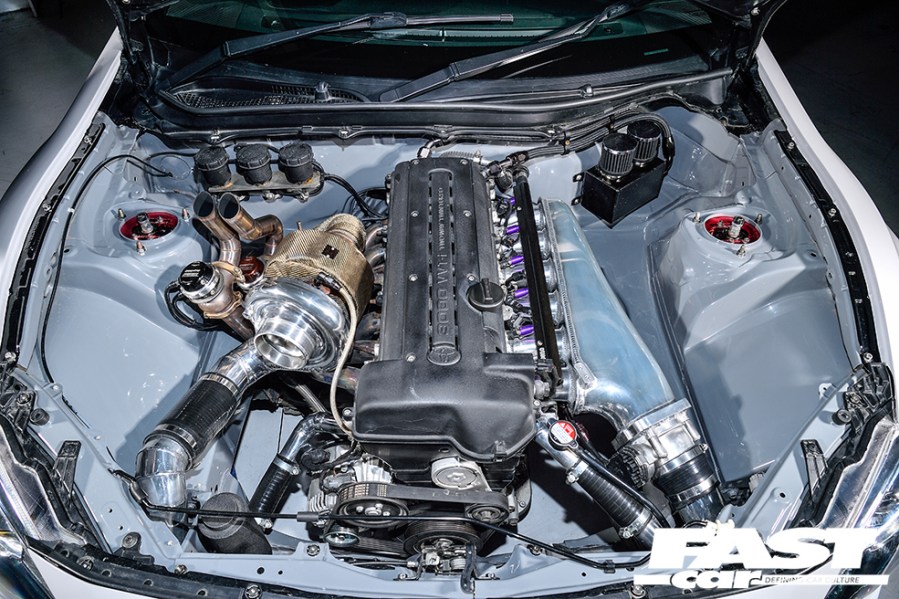The Toyota 2JZ is a legendary engine of the modern tuning era. With over 2500bhp possible, we show you how to tune the over-engineered 2JZ-GTE.
Toyota’s 2JZ-GTE has been one of the best known engines in the car tuning scene for the last couple of decades. To most modified car fans it has an almost God-like status among engines.
But is that status justified? Yes! This is an engine that, unlike most other great engines, doesn’t come from a motorsport background. The Supra GT and Le Mans race cars didn’t run 2JZs! For reasons we may never know, Toyota wildly over-engineered the engine, meaning the tuning potential is absolutely incredible.
There are 2JZs that have ran 5 second quarter miles and others that have done over 330mph. All from an early 90s engine that left the factory with 320bhp or less. And guess what? We’re here to show you how to tune 2JZ-GTE and unlock its full potential.
What is the Toyota 2JZ-GTE engine?
The 2JZ-GTE is an iron block, three-liter, inline six cylinder, with a twin cam 24 valve cylinder head, and twin sequential turbochargers. From the factory it came in certain versions of the JZA80 (aka Mk4) Supra and JZS147/JZS161 (aka Mk1+2) Aristo. First produced in 1991, the only big change was in 1997 when the VVTi version added variable valve timing to the mix. That’s how it stayed up until the end of production in 2002.
Aside from the cylinder head change, there are some minor turbo changes between versions. Technically, the export market versions have a few more minor upgrades that the Japanese ones did not. However, in the grand scheme of things, they’re all fairly insignificant. Every single incarnation of the 2JZ-GTE has the potential to make hypercar beating power levels with relative ease.
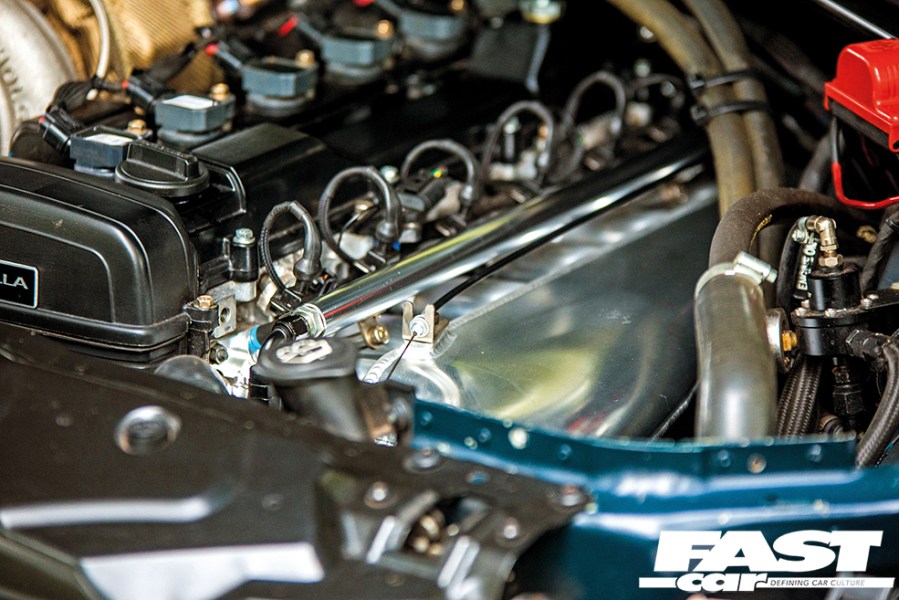
The basics of Toyota 2JZ-GTE tuning, Boost Pressure Upgrade (BPU)
Before you go wild chasing big power numbers, the first thing to do is make sure the engine is capable of making standard power; these engines are 20 to 30 years old after all! An overall health check; fresh cambelt; tensioner; and water pump, oil and filter change; and ideally a smoke test to make sure there’s no boost leaks, are all very wise moves before you start. This is great not only for reliability, but to make sure you’re not starting on the back foot with less than standard power.
Commonly known as the BPU, i.e. Boost Pressure Upgrade, this is the traditional and well-proven tuning method for an otherwise standard 2JZ-GTE engine. It brings you to around the maximum the factory turbochargers are capable of.
This generally consists of a full turbo back exhaust system, a boost controller, and a little box of tricks, often known as a FCD, to manipulate the signal to the MAP or MAF sensor (depending if you own a JDM model or not) to prevent the factory ECU from cutting power when you increase the boost level. These are the basics, but a front mount intercooler, one step colder plugs gapped a little closer, and an AFR gauge to make sure your fueling is safe when on boost, are also wise additions at this level.
The factory ECU can’t be tuned as such. However, it can compensate to some extent, and depending on the car, the dyno, and so on, people have seen 400-430bhp at 14-18psi from this sort of setup. Beyond this, the standard ECU, turbochargers, and fuel system all become the limits of making much more power.
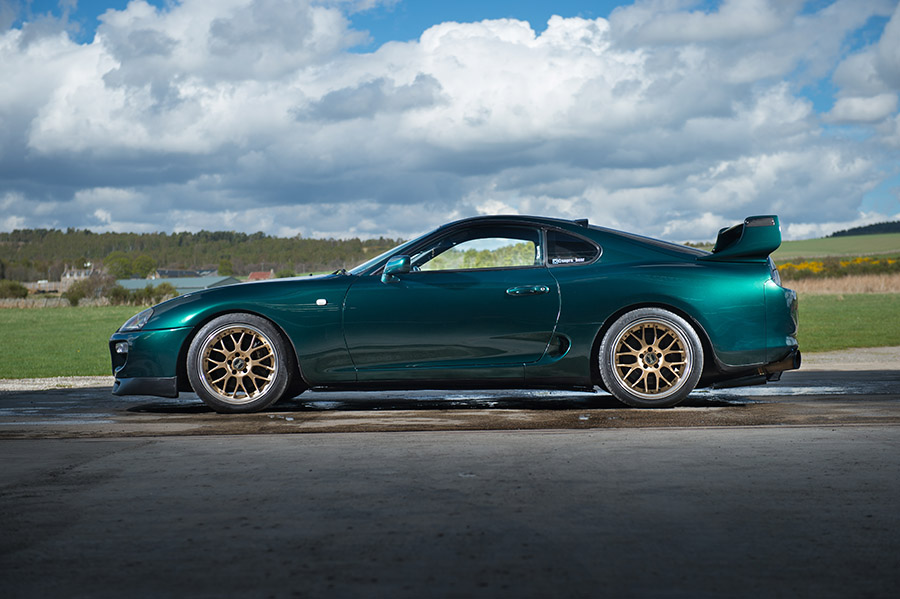
Exhaust system upgrades for the 2JZ
Like all turbocharged engines, the Toyota 2JZ really responds to a freer flowing exhaust system. In fact the standard exhaust is so restrictive that a simple change to a 3inch system often drastically increases the boost level with no other changes!
You have two main choices when it comes to the exhaust for your 2JZ-GTE. Do you want a three inch system, or a four inch system? 3 inch exhausts were always the traditional size for years and are proven at over 700 horsepower. However, with the more recent availability of 4 inch systems, they are worth seriously considering beyond around the 500bhp mark. The larger diameter gives gains in both spool and power, and is a must beyond 700bhp. Some people have achieved over 1500bhp on a full length 4 inch system.
The two other considerations when it comes to 2JZ-GTE exhausts are weight and volume. Taking the Supra exhausts from Garage Whifbitz as an example, they offer both 3inch and 4inch systems; both with one or two silencers, and the option of being made of stainless steel or titanium.
For track day use, a two silencer version is highly recommended to enable you to pass noise limits. But, if you’re all about the volume, a straight through single box exhaust is the one for you and is slightly lighter also.
When it comes to weight, all aftermarket exhaust systems are far lighter than the standard item, around half in fact; but for the ultimate in lightness, not to mention the cool factor, the titanium systems are top of the tree. The Whifbitz 4 inch titanium system c oming in at just 6kg for example!
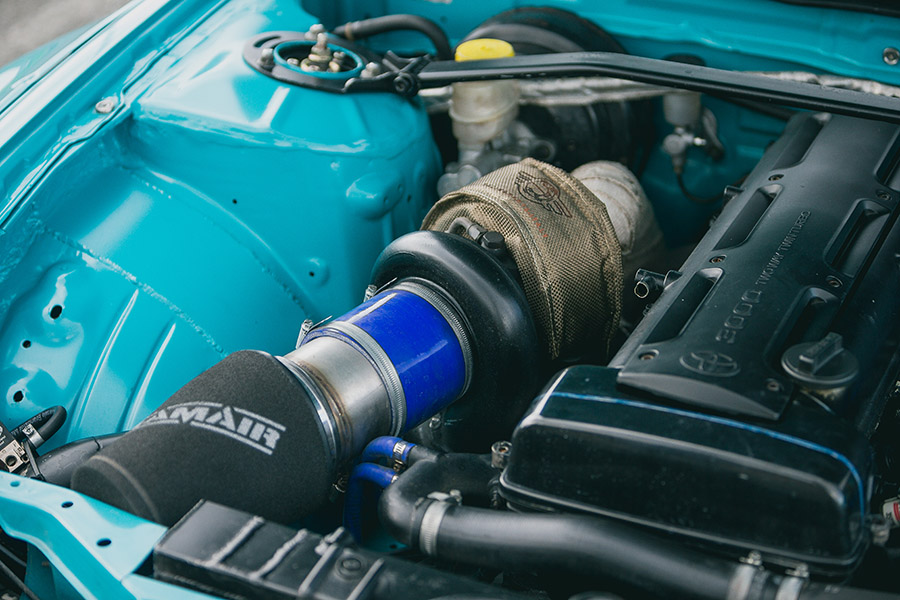
Intake system upgrades for the Toyota 2JZ
While the factory intake setup is fine for mildly tuned engines, it’s of zero use for big power. If you’re sticking with the factory twin turbo setup there are various cone filter kits available, all of which are easy to fit. ARC made an air box which both looks to be the highest flowing and likely give the coolest air feed from off-the-shelf kits for factory turbos, but they are rare.
The vast majority of tuned 2JZ-GTEs run on a big single turbocharger. This necessitates a different intake design. Thankfully, partly due to the much simplified turbo system, and partly due to the associated aftermarket ECU which will remove the need for the MAF sensor, this is very easy. Almost all single turbo setups fitted to the 2JZ will have a four or five inch inlet turbocharger. You can either fit an air filter with a 4-5in flange directly to the turbo, or ideally closer to the front end of the car; at the end of a solid pipe to hopefully draw in colder air. Usually a simple 45degree pipe is all you need to place the air filter behind the headlight.
On the subject of cold air, cold air is good, but it comes a distant second place to enough air. That’s why almost all tuned 2JZ you see will run a large cone filter rather than an airbox. A non-restrictive airbox at 600bhp would be hard to package in a 2JZ engine bay. One capable of more power would be almost impossible. A non-restrictive huge cone filter sucking in warmer air will give far better performance than colder but restrictive airflow. For high power this is almost always the way forward.
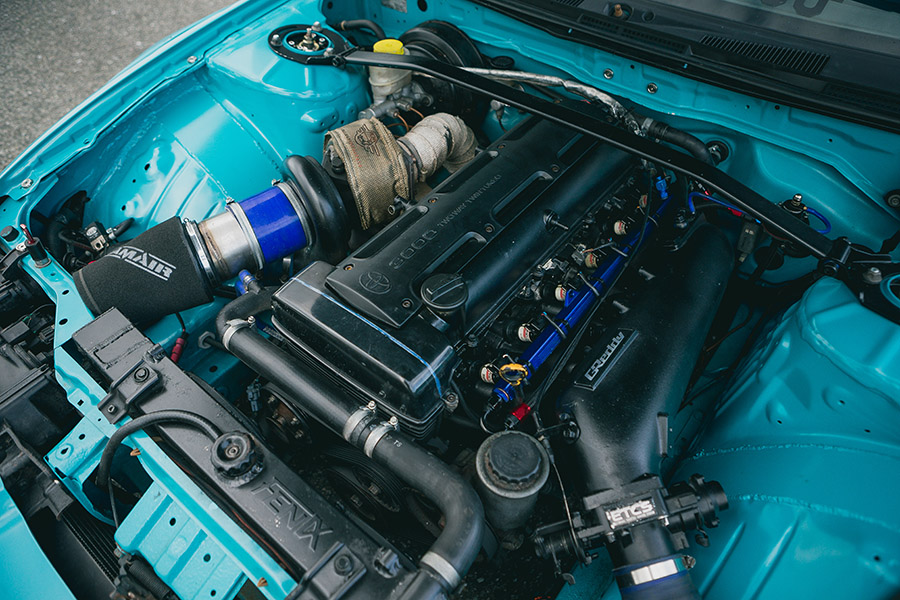
ECU upgrades for the 2JZ-GTE
To get any worthwhile power out of the 2JZ engine, the factory ECU has to go; it doesn’t alloy tuners to satisfy the fueling and ignition needs of a big power engine. Thankfully, there are lots of options out there. While a full custom loom is a good thing as these cars are potentially 30+ years old now, if you want a simple solution most aftermarket ECUs out there have custom adapters to plug right in to the standard 2JZ-GTE loom, creating a plug-and-play solution.
Aside from the obvious improvements of being able to correctly set your fuel and ignition settings, going to a good aftermarket ECU has many other advantages too; though some extra wiring may be needed if you’re using the factory wiring loom. Drive-by-wire throttle, improved knock and boost control systems, wideband lambda air/fuel ratio control, anti-lag, launch control, and much more are all possible. This can both transform how a 2JZ will drive and help the engine stay reliable under hard use. Don’t forget though, the ECU is only as good as the person tuning it. Choosing the right tuner is even more important than your choice of ECU!
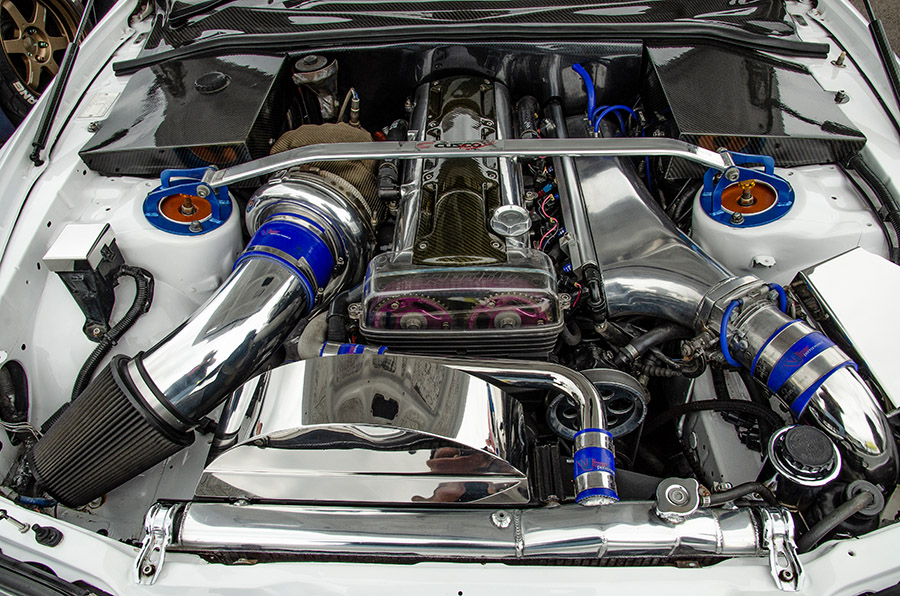
Turbocharger upgrades for the Toyota 2JZ
When you picture a 2JZ engine in your head, the one thing almost everyone imagines is a big single turbocharger; despite these engines coming with a trick sequential twin turbo system as standard. However, if you want to really unleash the massive potential of the engine, the standard setup has to go.
The standard setup is complex, relatively fragile, and maxes out at around 400-450bhp. While stock position 600bhp hybrids are possible, it’s an expensive and complex way to do things. Unless you truly wanted a factory looking engine, there’s little point in doing so.
Aftermarket ‘big’ twin turbo setups have appeared over the years, but just like the standard setup, they are rare as there are great turbo and manifold availability for single turbo setups. Twins add nothing from a performance point of view and simply add complexity and cost.
When it comes to single turbo choices, the world is your oyster. The options are getting wider all the time as new products are still constantly coming to the market for the 2JZ-GTE.
Regardless of your power goal, generally the smallest single turbo you should go for is something like a Garrett G35, Precision 6062, or BorgWarner S362. This is nothing to do with the compressor side, it’s because a turbo any smaller will have a turbine side that’s too small and restrictive for a 2JZ-GTE. With a good setup all of these units will spool up incredibly quickly.
How big you go beyond this depends on your goals. If you’re not sure what you want, any 2JZ specialist would be able to recommend a turbo for your goals. Considering people are running as big as 102mm ProMod turbos on some extreme2JZs and making well over 2000bhp, your goals can be as high as you like!
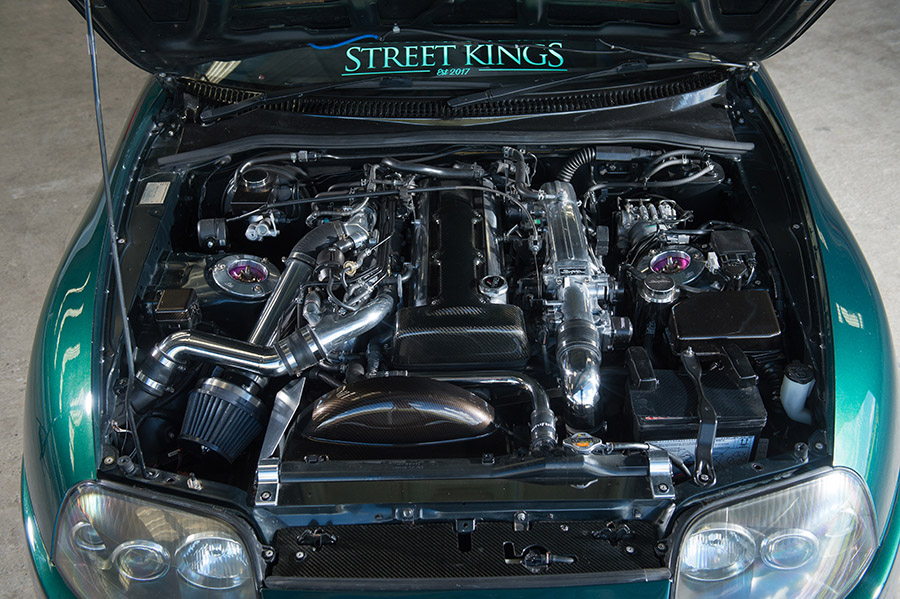
Exhaust manifold upgrades for the Toyota 2JZ-GTE
As well as the turbo itself, a vital part of single turbo conversion on a 2JZ is the exhaust manifold, and there’s a wide selection to choose from. The main choices you have to take into account are overall design, turbo flange type, and construction material.
With the design, you have a choice of single and twin scroll manifolds. A well-designed twin scroll manifold, along with a matching twin scroll turbo, generally spools noticeably faster than a single scroll setup if all else is equal. On drag cars this tends to be zero issue. However, for road and circuit cars this has to be a consideration. Another design factor is the pipework, with short runner ‘log’ manifolds available as well as more typical long runner tubular manifolds. While the tubular designs tend to make more power, they’re certainly more complex and take up a lot more space than the log style from the likes of Artec and SPA. These are very simple, durable, and are still proven to make big power.
Regarding turbo flange, while most conventional turbo flanges will be T4 on a 2JZ-GTE, v-band turbo flanges are becoming more common and offer many advantages. V-band setups are more compact, far easier to fit, and allows the turbo to be fitted at any rotation you like. Unfortunately twin scroll v-band manifolds and turbochargers are rare. You are generally limited to single scroll setups if you choose v-band.
Finally, the construction material. The most common is the welded stainless steel pipe we are all familiar with, but these are more prone to cracking compared to cast items. Cast iron 2JZ manifolds exist from SPA Turbo. Artec make cast stainless steel versions, including long runner twin scroll types, effectively giving you the best of both worlds.

Inlet manifold upgrades for the 2JZ
While people have made over 800bhp on the standard 2JZ-GTE manifold, that’s not to say it can’t be improved long before that. People have shown worthwhile dyno proven gains by fitting an aftermarket inlet manifold even at the sub 600bhp mark.
Hypertune, Plazmaman, Ross Machine, Gato, ProJay and many others make 2JZ inlet manifolds. As well as looking awesome, they are capable of massive power levels. Most of these even have the option of running two injectors per cylinder for you massively power hungry people out there. The ProJay billet inlet has the option for 3 injectors per cylinder, i.e. 18 injectors, just in case you want to build a 2000bhp+ Methanol guzzling drag monster.
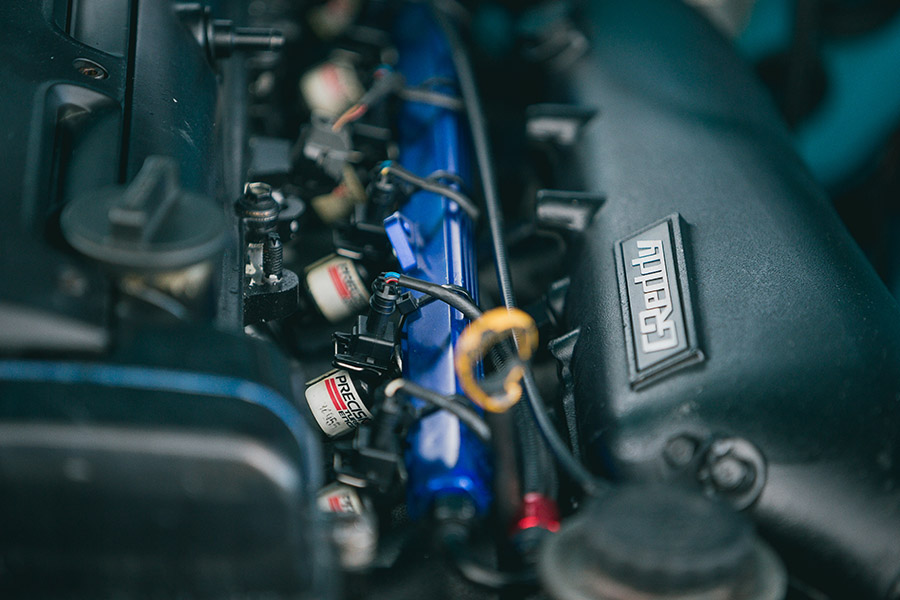
Engine internal upgrades for the Toyota 2JZ
Last but by no means least on our how to tune a 2JZ-GTE guide is the literal heart of the 2JZ-GTE, the engine internals themselves. These engines are legendarily strong and capable. It’s an engine that is famous for being able to make over 1000bhp on standard internals. But does that mean it’s a good idea? Well, not really, and besides, these engines can make over twice that if you want!
Yes they can make absolutely massive power on standard internals, but if you want a reliable engine that can take that power for long periods of time, especially on pump fuel, realistically 700bhp is about the ‘safe’ limit. Even then you’re on relatively borrowed time depending on how hard you use your car.
The standard valvetrain and internals tend to be happy enough to around 7500rpm, but any more tends to rapidly show issues. A big turbo car with longer duration camshafts that will be driven hard at high rpm will want uprated valve springs, h-beam rods and ARP rod bolts; ideally even billet main caps too. While the stock pistons and head gasket are incredibly strong, as the engine has to come apart regardless, it’s generally wise to change these at the same time.
The standard crank is fantastic and generally has no issues at big power and rpm, but many stroker kits exists. You can take them to 3.2ltr, 3.4ltr, 3.5ltr, and even a Tomei 3.6ltr kit, all noticeably improving torque and turbo spool. Bear in mind, though, bigger is not always better, especially for high rpm reliability. Choose wisely to suit your goals.
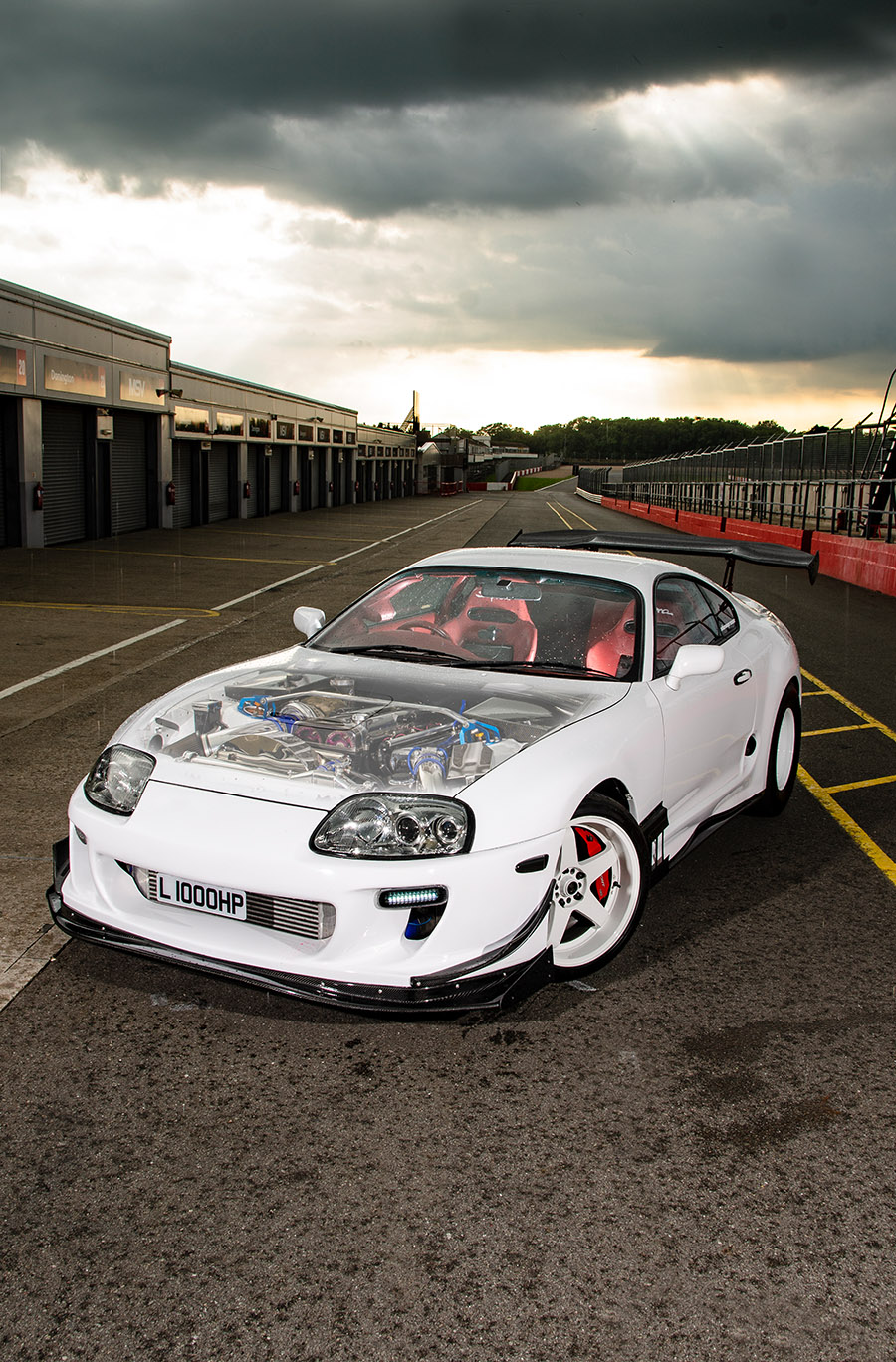
Billet 2JZ engines
But what if you’re an absolute mad man and want 1400bhp or more and you’re at the level where even the standard Toyota 2JZ block can actually be a weak point? No problem! Dart produce an aftermarket 2JZ-GTE block that’s even stronger than standard. It comes with much stronger 4 bolt main caps too. If you really want the ultimate though, maybe a 2500bhp 2JZ, Bullet Racing make a full billet 2JZ block for the ultimate in both strength and bling!
Check out our Toyota Supra Mk4 buyer’s guide.

